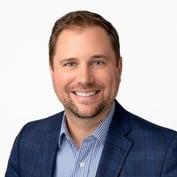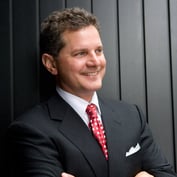To David Scranton, CEO of Sound Income Group, “the real magic” is “the ability to get competitive returns with less risk.”
Scranton, in an interview with ThinkAdvisor, argues that “adding a little bit of the riskier assets to a conservative portfolio can help increase your returns but lower your volatility and risk.”
That’s been Scranton’s unusual income-generating strategy for about 25 years. When he switched from a growth approach, the advisor saw his business “explode,” increasing “10-fold in about six years,” he says.
Scranton, a 2023 ThinkAdvisor LUMINARIES award finalist in Executive Leadership, focuses on boosting income with higher-dividend equity strategies and bond-like investments.
That way, he’s able to offer “institutional-style money management” to his target clients, “mom and pop” investors, as he puts it, who have, perhaps, about $100,000 of investable assets.
Scranton, who hosts a radio show syndicated in 40-plus states and has been in the industry since 1987, has four businesses, with assets under management totaling $2.5 billion. Sound Income Group includes his own longtime practice, Scranton Financial Group, in Old Saybrook, Connecticut, and three companies that support other independent financial advisors with marketing, coaching, practice management, investment services and franchise opportunities.
In the recent phone interview from Fort Lauderdale, Florida, where his group is based, Scranton says is dedicated to helping “average” folks and is especially eager to advise baby boomers, who are “more afraid of financial death — running out of money — than physical death.”
Here are highlights of our interview:
THINKADVISOR: What’s your investment strategy?
Income permeates everything we do. It’s our overall theme.
If you’re in the stock market, it’s higher-dividend equity strategies.
We also do a lot of bonds and preferreds, and real estate investment trusts.
If you go from stocks to bonds, it lowers your risk. If you go from growth stocks to high-dividend stocks, it lowers your risk.
So income helps lower your volatility, but it doesn’t necessarily mean a reduced return.
That’s the real magic: the ability to get competitive returns with less risk.
How does that happen?
There’s a point where adding a little bit of the riskier assets to a conservative portfolio can actually help increase your return but lower your volatility and risk.
My theory, going back 25 years, being a specialist in bonds, was that if I added bond-like equities to a bond portfolio, it would have the same result as adding regular equities and increase my return [via] risk.
And that’s exactly what we’ve proven to work successfully for clients.
When I talk about bond-like equities or bond-like stocks, I mean business development companies and REITs. They’re bond-like stocks because of what’s in them.
By adding a little bit of that to a portfolio of bonds and preferreds, we can actually increase the return – the income payment – and decrease the risk.
What’s the main benefit for advisors?
Baby boomers need more income, but the majority of financial advisors are growth-based and don’t focus on income. Most of them are focusing on total return irrespective of whether it comes from growth or income.
But baby boomers are getting older and older, and recent studies have shown that they’re more afraid of financial death — running out of money — than physical death.












 Copyright © 2024 ALM Global, LLC. All Rights Reserved.
Copyright © 2024 ALM Global, LLC. All Rights Reserved.